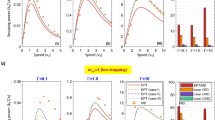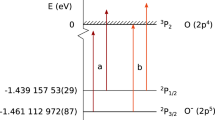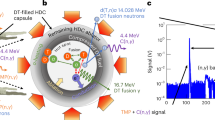Abstract
A NEW method of studying the angular distribution of ionizing particles with ionization chambers has been developed here and then applied to the study of the angular distribution of uranium fission fragments produced by fast neutron bombardment. Fig.1 shows the principle involved. A and B are the positive and negative plates respectively of a plane parallel-plate ion chamber filled with pure argon gas, in which the negative ion mobility is very much greater than that of the positive ions. A is lined with a layer of U3O8 and bombarded with neutrons. Let PQ be the ion track of a fragment emitted at angle θ to the electric field. The negative ions are collected first, amplified and made to trigger the time-base of a cathode ray tube, and the positive ions are collected afterwards and applied to the Y plates. (Our thanks are due to Dr. A. N. May for suggesting this initial idea.) It is clear that the position of the positive ion pulse on the time-base will give a measure of the projection length of the ion track on the electric field.
This is a preview of subscription content, access via your institution
Access options
Subscribe to this journal
Receive 51 print issues and online access
$199.00 per year
only $3.90 per issue
Buy this article
- Purchase on SpringerLink
- Instant access to full article PDF
Prices may be subject to local taxes which are calculated during checkout
Similar content being viewed by others
Author information
Authors and Affiliations
Rights and permissions
About this article
Cite this article
RAMANNA, R., CHAMPION, F. Modified Ionization Chamber for Study of Angular Distribution of Ionizing Particles. Nature 164, 226–227 (1949). https://doi.org/10.1038/164226b0
Issue date:
DOI: https://doi.org/10.1038/164226b0



